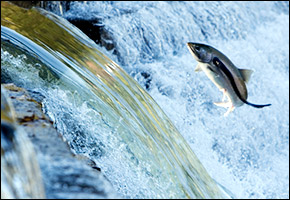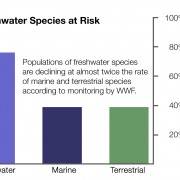Love Could Kill Invasive Lamprey
Scientists have developed a new weapon in the war against the invasive sea lamprey: love. The chemical marker, or pheromone, is used to lure the animal, a technique already used to help control invasive moth species in Michigan and elsewhere.
Professor Weiming Li of Michigan State University helped develop the new chemical defense: the pheromone attracts spawning females, tricking them into thinking a male lamprey is nearby. As the female approaches the source of the chemical marker, she is trapped, allowing scientists to remove her from the waterways.
The invasive lamprey is already responsible for the extinction of three endemic Great Lakes whitefish species, and the new technique could help eradicate the lamprey from the freshwater ecosystem.
The parasitic fish was introduced to the greater Great Lakes ecosystem as early as the 1830s via the Erie Canal. Though it may have been native to Lake Ontario, its spread into Lake Erie, Lake Huron, Lake Superior, and Lake Michigan decimated native fish populations throughout the 20th century. In addition to attacking native whitefish and lake trout, the lamprey also attacks introduced salmon species popular with sport fishermen.
The findings are detailed in this month’s Proceedings of the National Academy of Sciences.
Sources: Michigan State University, Proceedings of the National Academy of Sciences
Circle of Blue’s east coast correspondent based in New York. He specializes on water conflict and the water-food-energy nexus. He previously worked as a political risk analyst covering equatorial Africa’s energy sector, and sustainable development in sub-Saharan Africa. Contact: Cody.Pope@circleofblue.org









Leave a Reply
Want to join the discussion?Feel free to contribute!